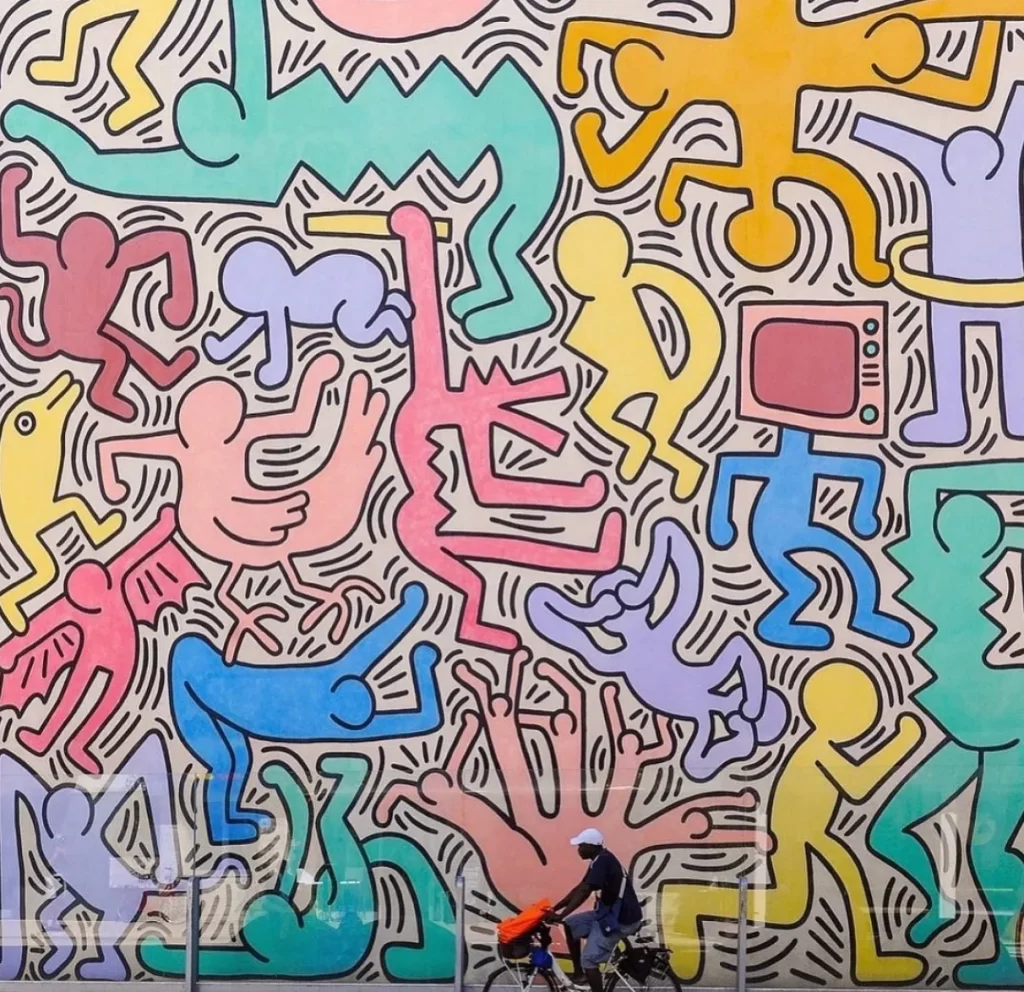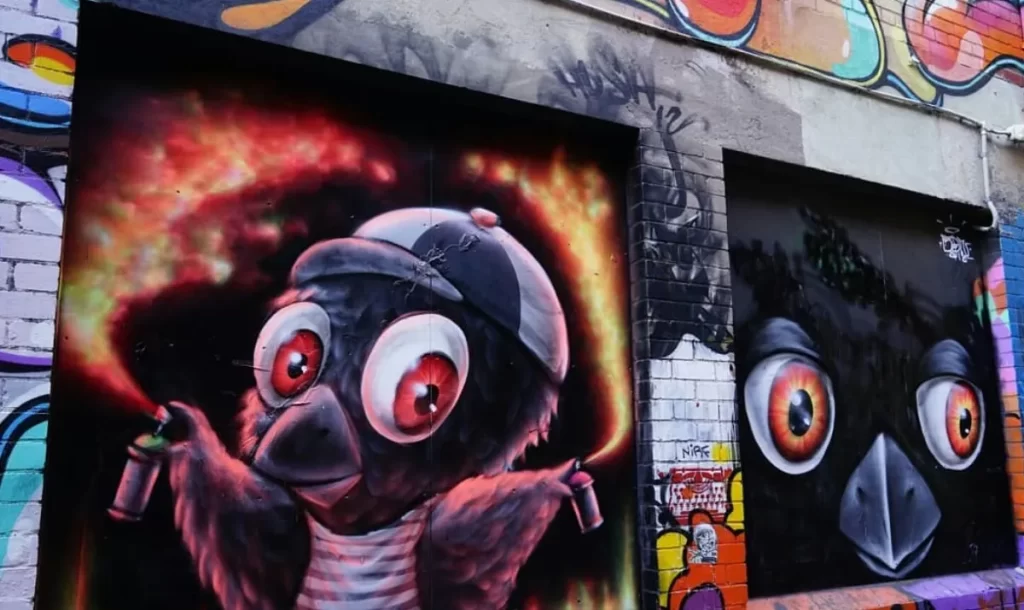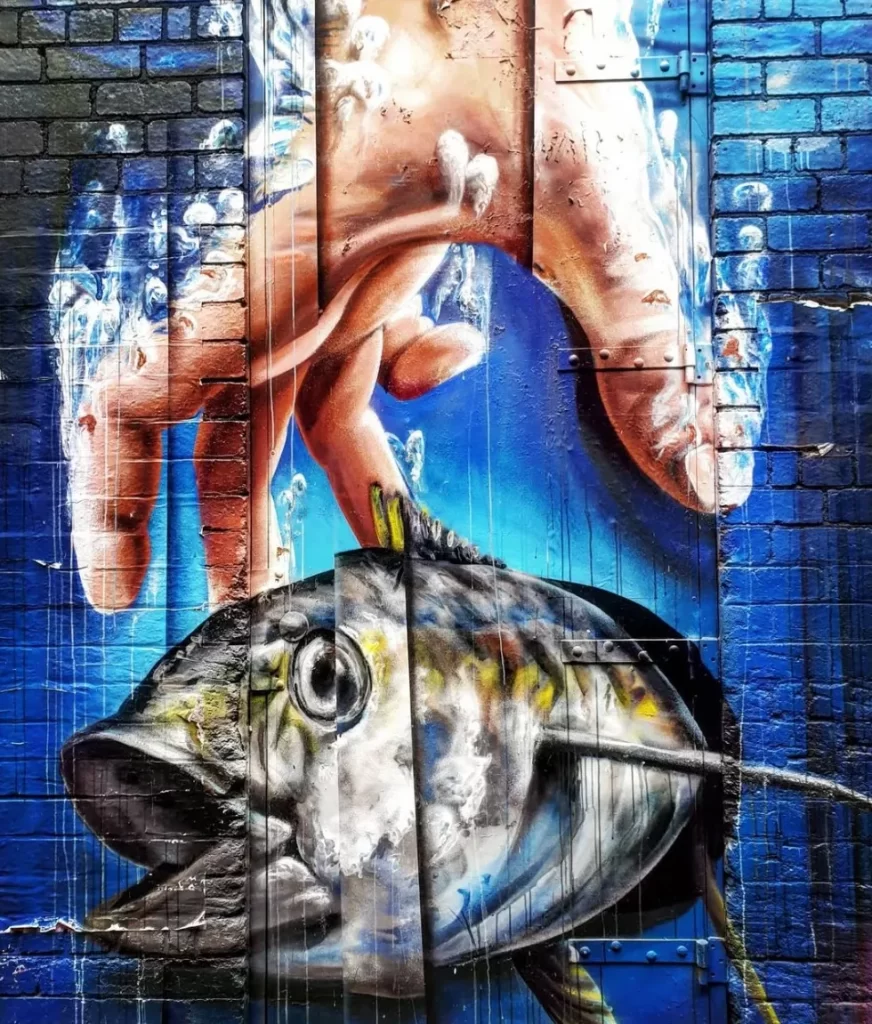Exploring Melbourne’s Iconic Laneways and Street Art
Melbourne, Australia’s cultural capital, is renowned for its vibrant street art scene and intricate laneways. These hidden alleys, once utilitarian spaces, have transformed into canvases for street artists from around the globe. This article delves into the history, evolution, and must-see spots of Melbourne’s laneways and street art, offering a comprehensive travel guide to exploring these urban masterpieces.
Melbourne’s Laneways
History of Melbourne’s Laneways
Melbourne’s laneways have a fascinating history that reflects the city’s growth and transformation. Originally, these narrow alleys served as essential passageways for pedestrians and delivery carts in the burgeoning cityscape. They were crucial for maintaining the city’s layout and facilitating movement between bustling streets like Bourke Streets and Collins Street. Over time, many of these historic laneways became neglected, overshadowed by Melbourne’s expanding infrastructure.
By the mid-20th century, many laneways had fallen into disrepair. However, the late 20th and early 21st centuries saw a significant transformation. The city’s burgeoning street art scene began to infuse these alleys with new life. Laneways such as Hosier Lane, Degraves Street, and Flinders Lane became renowned for their vibrant and captivating street art, transforming them from forgotten alleys into iconic cultural landmarks.
Evolution from Alleys to Artistic Hubs

The evolution of Melbourne’s laneways from utilitarian spaces to artistic hubs is a testament to the city’s dynamic cultural development. In the 1980s and 1990s, as street art gained prominence, these laneways were embraced as canvases for creative expression. Melbourne’s cultural capital status was solidified as local and international street artists began using these narrow alleys to display their work, contributing to the city’s reputation as a global street art destination.
This transformation was not only a revitalization of the physical spaces but also a reflection of Melbourne’s creative spirit. Laneways such as ACDC Lane, Union Lane, and Croft Alley became vibrant galleries showcasing a kaleidoscope of colours and artistic expression. This shift played a crucial role in redefining the city’s urban landscape, turning these hidden laneways into must-visit spots for art lovers and street art enthusiasts.
Melbourne’s Street Art Scene
What Defines Street Art?

Street art is characterized by its public display in urban spaces, often outside traditional art galleries. It encompasses a wide range of artistic expressions, from graffiti and stencils to intricate murals and 3D sculptures. In Melbourne, street art can be seen on entire buildings, bluestone laneways, and even small alleyways, creating a dynamic street culture that is both engaging and ever-changing.
Notable examples of Melbourne’s street art include the iconic Keith Haring Mural and works by artists such as Mike Makatron and Fintan Magee. These artworks contribute to the city’s vibrant street art scene, adding to the diverse array of colours and styles that characterize Melbourne’s urban environment.
Best Time to Visit Melbourne
Melbourne’s street art scene is a year-round attraction, but the best time to explore the city’s laneways and street art is during the spring and autumn months. During these seasons, the weather is pleasant, and the bustling markets, including the Queen Victoria Market, are in full swing. Additionally, events and festivals celebrating street culture and art often take place during these periods, offering visitors an enhanced cultural experience.
Notable Laneways and Street Art Locations
Melbourne is home to numerous famous laneways that are renowned for their street art.
Hosier Lane, Melbourne
Hosier Lane is arguably Melbourne’s most famous laneway for street art. Located near Federation Square, this alley is a constantly changing canvas where street artists from around the world showcase their work. The vibrant murals and graffiti here reflect the dynamic nature of Melbourne’s street art scene, with new pieces appearing regularly.
Keith Haring Mural
The Keith Haring Mural, located on the corner of Hosier Lane and Flinders Street, is one of Melbourne’s most iconic street art pieces. This artwork, by the renowned American artist Keith Haring, adds a touch of international art history to Melbourne’s urban landscape. Its bright colours and distinctive style make it a standout piece in the city’s street art collection.
Blender Lane

Blender Lane, situated off the corner of Flinders Lane and Degraves Street, is home to Blender Studios, an artist collective that has transformed the lane into a vibrant art space. The laneway features a mix of street art, including murals and installations by local artists, creating a lively and ever-changing gallery.
AC/DC Lane
Named after the iconic Australian rock band AC/DC, this laneway, located near the corner of Bourke Street and Lonsdale Street, is a tribute to Melbourne’s musical heritage. The street art here often reflects themes of rock and roll, adding a gritty, energetic vibe to the area.
Croft Alley
Croft Alley, located between Little Bourke Street and Lonsdale Street, is a narrow passage known for its eclectic mix of street art. The alley features a blend of colourful murals and graffiti, showcasing the creativity and diversity of Melbourne’s street artists.
Duckboard Place

Duckboard Place, off Flinders Lane, is another hotspot for street art enthusiasts. The laneway is lined with striking murals and installations, making it a popular destination for those looking to experience Melbourne’s vibrant street art scene.
Fitzroy Street
Fitzroy Street, located in the inner suburb of Fitzroy, is renowned for its artistic vibe. The street and its surrounding laneways feature a mix of street art and contemporary galleries, reflecting the area’s creative spirit.
Drewery Lane
Drewery Lane, located near Swanston Street, is a charming laneway that has been embraced by Melbourne’s street artists. The area features an array of colourful and imaginative street art, adding to the cultural richness of the city.
Rankins Lane
Rankins Lane, situated off Elizabeth Street, is known for its dynamic street art and vibrant atmosphere. The laneway features works by both emerging and established artists, contributing to Melbourne’s diverse urban art scene.
Hanover House
Hanover House, located near the intersection of Howey Place and Bourke Street, offers a unique blend of historic architecture and modern street art. The juxtaposition of old and new adds to the charm of this iconic Melbourne location.
Here’s a guide to some of the most iconic spots:
| Laneway | Notable Features | Nearby Attractions |
|---|---|---|
| Hosier Lane | Vibrant murals, dynamic street art | Federation Square, Flinders Street Station |
| Keith Haring Mural | Iconic mural by Keith Haring | Hosier Lane |
| Blender Lane | Diverse range of street art, including 3D sculptures | Melbourne Central, Bourke Street Mall |
| ACDC Lane | Rock-themed street art, tribute to AC/DC | Cherry Bar, Flinders Lane |
| Croft Alley | Eclectic mix of artworks, including famous graffiti | Howey Place, Lonsdale Street |
| Duckboard Place | Known for its vibrant and colourful artworks | Centre Place, Collins Street |
| Fitzroy Street | Historical and artistic blend | Gertrude Street, Brunswick Street |
| Drewery Lane | Unique street art, often featuring new artists | Hardware Lane |
| Rankins Lane | Smaller, hidden laneway with captivating pieces | Elizabeth Street |
| Hanover House | Blends historic building with street art | Melbourne Day Tours, Private Tours |
How to Explore Melbourne’s Laneway Artwork

Exploring Melbourne’s laneway artwork can be a fascinating journey. To fully appreciate the city’s street art scene, consider joining a guided street art tour. These Melbourne tours often provide insights into the history and significance of various artworks and the street artists behind them. Alternatively, you can embark on a self-guided tour, using a map or app to navigate the city’s laneways and discover hidden gems at your own pace.
Start your exploration in iconic areas like Hosier Lane and ACDC Lane, then venture into less well-known spots such as Rankins Lane and Drewery Lane. Don’t forget to visit local cafés and excellent coffee shops along the way, as they offer a perfect break from your artistic adventure. Additionally, Melbourne’s vibrant culinary scene and high-end restaurants provide a great opportunity to enjoy gourmet dining experiences while soaking in the city’s creative spirit.
Conclusion
Melbourne’s laneways and street art offer a unique glimpse into the city’s artistic and cultural heritage. From their historical roots as utilitarian passages to their current status as vibrant hubs of creativity, these narrow alleys reflect Melbourne’s dynamic evolution. Whether you’re a street art enthusiast or simply looking to explore the city’s hidden gems, Melbourne’s laneways provide a rich and engaging experience that captures the essence of this cultural capital.
FAQ
1. What is the best time to visit Melbourne for street art?
The best time to visit Melbourne for street art is during the spring and autumn months. The pleasant weather enhances your experience, and various street art festivals and events take place during these periods.
2. What are some must-see laneways in Melbourne?
Some must-see laneways in Melbourne include Hosier Lane, ACDC Lane, and Croft Alley. Each of these locations features vibrant and captivating street art that showcases the city’s dynamic artistic culture.
3. Can I explore Melbourne’s street art on my own?
Yes, you can explore Melbourne’s street art on your own using maps or apps that highlight key laneways and artworks. However, guided tours are also available for a more in-depth understanding of the art and its history.
4. Are there any famous street artists featured in Melbourne’s laneways?
Yes, Melbourne’s laneways feature works by renowned street artists such as Keith Haring, Mike Makatron, and Fintan Magee. Their artworks contribute to the city’s vibrant street art scene.
5. How can I find out more about Melbourne’s street art and laneways?
To find out more about Melbourne’s street art and laneways, consider visiting local art galleries, cultural landmarks, and taking guided tours. Additionally, online resources and city maps can provide valuable information about the best spots to explore.